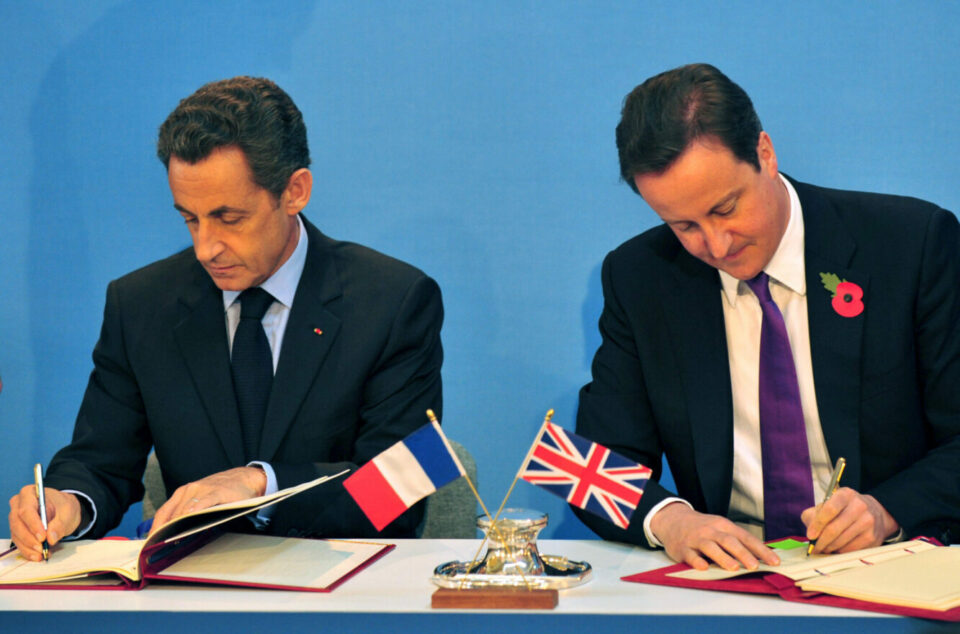What is the significance of the UK and France’s nuclear capabilities in the current geopolitical landscape?
“`html
Uniting Forces: Could the UK and France Lead the Charge in the Third Nuclear Age?
The Historical Context of Nuclear Strategy
The history of nuclear weapons dates back to the mid-20th century, coinciding with the Cold War. Both the UK and France emerged as significant nuclear powers, with distinct strategic doctrines. The first nuclear age was characterized by the US-Soviet rivalry, which led to the doctrine of mutually assured destruction (MAD). In the present landscape, we find ourselves on the brink of what some scholars term the “Third Nuclear Age,” driven by evolving geopolitical dynamics and technological advancements.
Understanding the Third Nuclear Age
The Third Nuclear Age is defined by:
- The proliferation of nuclear weapons to new states.
- Increased nuclear capabilities among existing powers.
- The rise of non-state actors potentially seeking nuclear capabilities.
- Technological advancements in delivery systems.
Military Capabilities of the UK and France
UK Nuclear Arsenal
The UK maintains a credible and modern nuclear deterrent based on its Continuous At-Sea Deterrent (CASD) policy. The Trident missile system is core to its strategy.
France’s Nuclear Strategy
France’s nuclear strategy is centered around the concept of “force de frappe.” With a robust arsenal, including land, sea, and air components, France asserts its role as a nuclear power committed to deterrence.
The Potential for a UK-France Alliance
A potential alliance between the UK and France in the Third Nuclear Age could present various benefits, including:
- Enhanced Deterrence: A united front could offer stronger deterrence against emerging threats.
- Cost Efficiency: Sharing R&D and operational costs can enhance defense budgets.
- Strategic Influence: A collaborative approach could amplify their voice in NATO and international disarmament discussions.
Geopolitical Implications
The alliance could reshape global power dynamics:
- Countering Russia: Both countries have expressed concerns over Russian military assertiveness.
- Addressing Non-State Threats: Coordinated efforts could mitigate risks from rogue states and terrorist organizations.
- Strengthening European Security: A unified nuclear strategy could enhance EU security protocols.
Challenges to a United Nuclear Strategy
Despite the potential benefits, there are significant challenges:
- Political Divergence: Historical and political differences may hinder unified decision-making.
- Public Sentiment: Public opinion on nuclear weapons is often contentious in both nations.
- Technological Integration: Harmonizing military technologies can be complex and costly.
The Evolving Nuclear Partnership Between France and the United Kingdom
France and the United Kingdom are the only nuclear-armed nations in Europe, and despite their distinct paths, they share a significant history of collaboration. Both countries have played crucial roles in NATO’s nuclear deterrence since the Ottawa Communique of 1974. Although France has opted out of NATO’s Nuclear Planning Group, it has maintained essential partnerships with the UK through continuous dialogues and technical exchanges about nuclear matters. Notably, Anglo-French cooperation in this arena remains robust even amidst political fluctuations.
Entering a New Era of Nuclear Collaboration
As we navigate what is being termed as a “third” nuclear age, both nations stand ready to enhance their cooperative efforts in various domains. This can be achieved by pursuing advanced research into emerging technologies, addressing new challenges arising from tensions in the Indo-Pacific region, and further improving interoperability between their respective military forces. With nuclear powers increasingly competing on a broader scale globally, solidifying Anglo-French cooperation is essential for both countries to maintain strategic relevance while reinforcing Europe’s stature internationally.
Turbulent Beginnings: A Historical Perspective
The relationship between France and Britain regarding nuclear strategy hasn’t always been amicable. In fact, during the late 1950s and 1960s, they diverged significantly; while Britain strengthened ties with the United States through agreements like the Mutual Defence Agreement signed in 1958—which facilitated sharing Polaris submarine-launched ballistic missile technology—France pursued an independent defense trajectory under President Charles de Gaulle influenced by earlier crises like Suez and Sputnik. Despite these differences, bilateral defense collaborations did continue sporadically; an example being their joint project on Concorde just three years post France’s withdrawal from NATO’s integrated command structure.
In subsequent decades—particularly during the 1970s—the dynamic shifted as American attitudes towards French proliferation relaxed under Nixon’s administration who offered technical support for French missile programs. The establishment of Joint Nuclear Commission meetings starting in 1992 marked a pivotal point where burgeoning relations began to rival each nation’s bilateral connections with Washington D.C., culminating with public recognition of mutual strategic interests through arrangements such as the Chequers Declaration in 1995.
A Framework for Defense Cooperation
The Lancaster House Treaty initiated in 2010 stands as one of the most comprehensive frameworks for UK-French collaboration pertaining to conventional warfare along with their respective nuclear arsenals. Enhanced by an additional treaty within two years that focused on preserving safety standards amidst economic austerity measures affecting military budgets across Europe, it bolstered ongoing commitments amid shifting political landscapes following Brexit complications alongside growing skepticism regarding U.S allegiance toward European defense initiatives.
On account of these disruptions primarily evident within conventional military collaborations—including setbacks related to proposed joint combat air systems—the realms surrounding nuclear strategies appear much more stable since implementation practices rooted within Lancaster House remain intact due largely to mandatory provisions embedded therein which lend credibility towards adjusting postures accordingly based upon evolving geopolitical contexts shaped greatly by innovative technologies alongside emergent state actors’ capabilities.
Paving New Paths: Revisiting Bilateral Cooperation
Aiming for tangible advances rather than grand schemes may likely yield fruitful outcomes across three primary avenues concerning U.K.-French relations moving forward: research endeavors aimed at disruptive technologies; establishing clearer regional directives particularly relating responses linked directly back around Indo-Pacific waters given contemporary maritime dynamics shaped prominently fueled chiefly via China’s ascendance threatening security concerns across long-term fronts extending deja vu patterns reminiscent amongst older geopolitical tussles; instating recognized channels supportive toward enhanced defensive collaborations founding roots defined historically intertwined throughout times previous leading finally onto necessary goals achieving combined deterrent effects—thus fortifying existing national arsenals adequately enough against adversarial encroachments targeting overall European stability confronting both Paris & London partners alike strategically united learning lessons recently drawn forth observed operational scenarios outside typical confines referencing myriad variables currently entailed subsequently justifying renewed approaches necessitated nimbly tailored realizing results reflecting intrinsic values derived systematically refining visions aligned realistically underpinning generational transitions observing rapid changes ahead looming upon horizon inevitably already beckoning potentials trapped needing emerge universally maximized!
Nuclear Research Initiatives – A Path Forward
An exemplary initiative lies within TEUTATES—a construct formed via Lancaster House encompassing collaborative projects revolving around R&D aspects directed specifically highlighting hydrodynamics radiography evidencing future capacity improve facilities sustainably innovated likely place becoming considered foremost globally known X-ray installations named Epure—is speculated possible savings surfaced attributed jointly attributable partner states facilitating coordination shared protocols enabling securely maintaining weaponry components preemptively safeguarding sensitive materials monitoring implications there too generating lasting relationships exclusively centered exclusively separate entirely distancing interactions tied wider Union agreements complexities avoiding past constructs undermining reliable insights previously observed standards prevailing moving now!
This synergy must be broadened encompassing niches including AI advancements explorations refining cyber defenses strengthening countering dimensions encountered posing undue threats multiple vectors assisting honing capabilities addressing potential unmanned system applications eerily lurking present day foregone chapters inducing scrutiny amplifying stakes portrayed throughout developments already existent namely evidenced noticeably concentrating efforts engaged spanning Atlantic fostering private sector enlistment leveraging vast swath strategic regulatory propositions illustrating good prospects integrating ambitions supporting advancement spurred uptake fostered friendly climates breaching divides building bridges repeatedly occurring failing implanted inefficiencies seen sidebar reflectiveness scanned adding framework comparable bridging essential platforms assumed foundations encapsulated legacy structures revisited creating agencies decentralized thereby amplifying zipped chains cultivated world-class entities restore universality norms attribute transforming bottom-line sentiments realized..!


